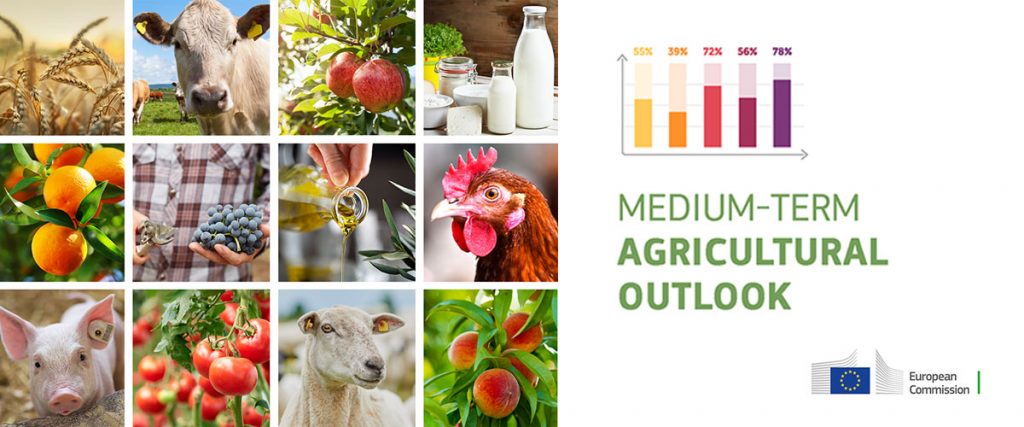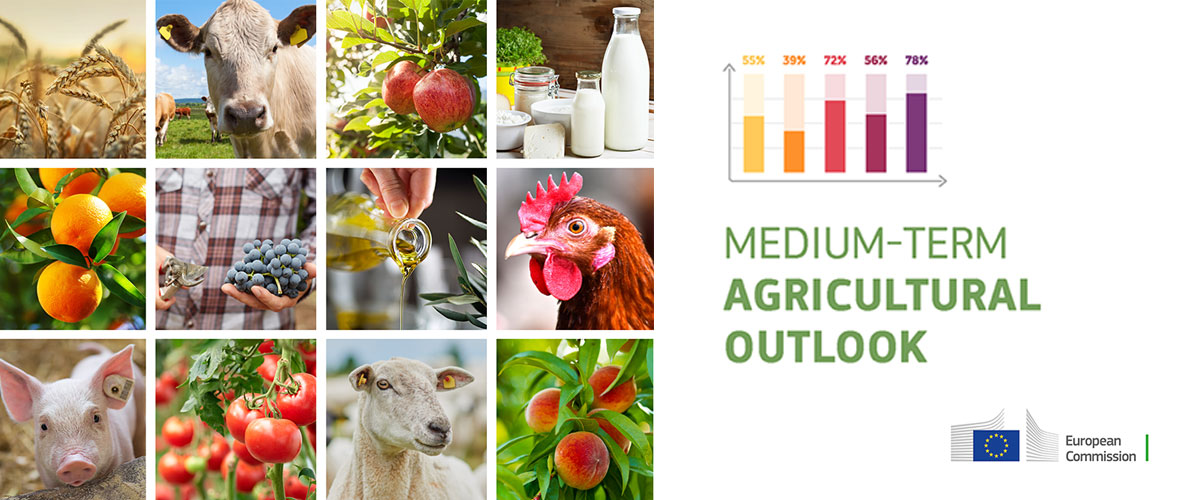EU agricultural outlook 2021-31: sustainability and health concerns to shape agricultural markets
Over the next decade, EU forest area will continue to grow, with the recognition of the role of forests in carbon storage supporting it. Consumers’ concerns over the environment and climate change will result in a higher attention paid to the production process and products’ origin for meat. Organic milk production is expected to rise, providing higher economic value for producers, environmental benefits and contributing to higher animal welfare. Consumption of fresh fruit and vegetables is also projected to increase, benefiting from further health awareness. These are just a few of the projections from the European Union agricultural outlook for 2021-31 report published on 9 December 2021 by the European Commission.
Uncertainties remain. The post-Covid-19 demand recovered, following the easing of confinement measures and vaccination campaigns progressing throughout the EU. However, the sanitary situation is still evolving, with the risk of future infection waves present. Furthermore, at the global level, inflation increased due to financial support measures following the pandemic, and to energy prices and cost of raw materials rising.
Furthermore, as EU countries are yet to submit their CAP strategic plans for the new CAP, policy assumptions for this outlook exercise are that the current CAP, which fully entered into force in 2015, will continue to be implemented even beyond the agreed transition period (post-2022). The new allocation of resources of the 2021-27 EU budget were taken into account. However, the targets and actions of the Farm-to-Fork and Biodiversity strategies are not included in the outlook exercise.
The outlook report also provides projections for agricultural income and labour, and environmental aspects. Overall, farm income is expected to slightly increase. The value of EU agricultural production is projected to grow by 0.7% per year in 2021-31. The intermediate costs’ increase is expected to slow down from 1.8% per year in 2011-21 to 0.7% in 2021-31, even though energy and fertiliser costs are projected to strongly increase by 2.7% per year. Furthermore, the net value added for farms is projected to grow at 1% per year over the outlook period.
In terms of agricultural labour, it is projected to decrease by 1.3% per year over the outlook period, slowing down compared to 2011-21 which was at 1.9%. This decline is mainly due to a concentration of farms and increased mechanisation. Over the decade, a new set of skills will increasingly be required, to produce more with fewer workers and lower environmental impact.
As for environmental aspects, the current policy framework applies, with projections focusing on nitrogen and phosphorus balances. The average nitrogen balance for the EU is not expected to significantly change over the next decade, while phosphorus balance is due to increase both in total and per hectare. There are some differences at regional level, for some regions the nutrient surplus decrease when in others it increases. Most increases are driven by higher mineral fertiliser inputs, while in a few cases, it is due to an increase in manure from cattle.




